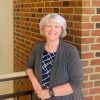This article is more than 5 years old.
I recently returned from the Society of American Archivists annual meeting in Atlanta, Georgia—it was a bit warm, but a nice shower every afternoon cooled things off. I am “in-between” on some of my governance duties and so I had the opportunity to attend some programming. In addition, all of the sessions are now available for anyone who attended, so I can listen to everything I missed.
I had the opportunity to attend a morning session of the Teaching with Primary Sources Unconference, which is a day-long series focusing on instruction. My session included speakers from the Robert C. Williams Museum of Papermaking (Georgia Tech), the Fernbank Science Museum, and the Federal Reserve Bank of Atlanta focusing on their work with K-12 students. Some of the valuable observations they shared that are applicable to any teaching situation:
o For the Paper Museum, they realized that visitors wanted the practical, hands-on experience of making paper;
o For the Science Museum, the curators displayed objects at the beginning of a tour, and then after the visitors had chosen their favorites, a tour was tailored for their interests;
o The Science Museum also gave each of us in the audience a packet of shark teeth, as they do with their K-12 visitors. This was to illustrate that holding something in your hand helps you learn!
Another focus of the SAA meeting was the introduction of One Book, One Profession, where all SAA members read one book together. The book chosen was Teaching with Primary Sources–Ordered!
I completed my term as Chair of the Committee on Public Policy (COPP). Over the past year, COPP worked on letters and statements in regards to Copyright, the Los Angeles Port Authority Archives Closure, the Trans-Pacific Partnership Agreement, and the issue of Replevin within the state of California. Finally, we drafted an Information Brief: Archivists and Climate Change based on an advocacy request by ProjectAARC (Archivists Responding to Climate Change). SAA Council approved it with some minor revisions. Next year, the Committee will be examining Classification and Declassification issues for federal records, Congressional Records as Public Records, and the Public Records Status of Police Body Cam Video.
SAA’s reception was held at the Coca-Cola Museum where they had exhibits and visitors could sample different types of soda (pop, in my Midwestern mind). I enjoyed several helpings of root beer. However, I will most remember my visit to the National Center for Civil and Human Rights across the way, which also welcomed us. The museum, which was visually stunning and emotionally wrenching, was hosting a loan of Dr. King’s Papers from Morehouse College. On display were a 1958 handwritten outline of Dr. King’s sermon “A Knock at Midnight” and a 1963 handwritten Draft of “Loving Your Enemies” that would be included as a chapter in Strength to Love. Seeing Dr. King’s handwriting was an incredible experience.
Finally, I gave a presentation as part of a panel focusing on Assessing Archives: Case Studies in Using Data as an Advocacy Tool. My main points focused on collection use analysis by using data from our outslips and LibAnswers; new efforts to better survey the faculty visiting Special Collections as we continue to build campus connections; and the history of assessing our web site and revising its content.
At the end of the week, during the Business Meeting, I was installed as the Vice-President/President-Elect for the Society of American Archivists. In 2016-2017, I will coordinate the Appointments Committee, which oversees volunteer and committee appointments for the entire organization. I am also assisting in organizing an SAA Council meeting with archivists in Mexico in order to build closer international relationships. There will be lots to do, and I am looking forward to getting started!

5 Comments on ‘SAA in Atlanta, 2016’
Congratulations-this is all very exciting. I used Dr. King’s handwriting in an exhibit years ago and felt the power of his words come through. Best wishes for the coming year in SAA.
Thanks for sharing.
Congrats on starting your term as VP/PE!
Thanks for including the link to “Archivists and Climate Change” information brief. This will be interesting for the board of SustainRT, the Sustainability Round Table of ALA (on which I’ve just started as member at large.) I’d love to see what was written about the TPP as well. What a great cross-section of experiences you had at this conference.
I was remiss in not mentioning National Center for Civil and Human Rights in my round up – it was a powerful experience and I recommend it to all who might pass through Atlanta!